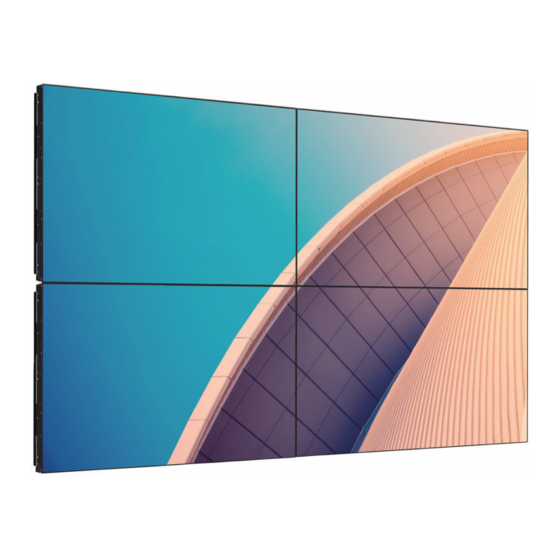
Summarization of Contents
Safety, Warnings, and Compliance
Safety Precautions and Maintenance
Covers operation and maintenance safety guidelines, including environmental ratings.
Stability Hazard and General Usage Warnings
Addresses stability, burn-in, and general operational safety precautions.
FCC Notice (U.S. Only)
Federal Communications Commission (FCC) notice providing compliance information for US users.
Polish Testing & Certification and EMF
Information on Polish certification requirements and Electromagnetic Fields (EMF).
Regional Installation and Safety Information
Installation and safety notes specific to UK and Nordic regions regarding plugs and ventilation.
Environmental and Chemical Compliance
Details China RoHS compliance for hazardous substances in products.
Health, Disposal, and Regional RoHS
Usage warnings, Turkey/Ukraine RoHS compliance, and end-of-life disposal guidance.
Waste Management and Energy Standards
Information on WEEE, ENERGY STAR, and India E-Waste regulations.
Battery Disposal and EAC Information
Guidance on battery disposal and Eurasian Economic Union (EAC) compliance.
Unpacking, Installation, and Mounting
2.1. Unpacking Procedures
Instructions for unpacking the display and checking contents for completeness and condition.
2.2. Package Contents
Lists all items included in the product package, such as the display and accessories.
2.3. Installation Notes
Notes on product placement, ventilation requirements, and altitude limitations.
2.4. Wall Mounting and VESA Grid
Details VESA mounting dimensions and cautions for secure wall installation.
2.5. Portrait Orientation Mounting
Instructions for rotating the display for portrait mode installation.
2.6. Edge Alignment Kit Installation
Step-by-step guide for installing the edge alignment kit for video wall setups.
2.7. Optional Edge Finishing Kit
Information on using an optional kit for aesthetic finishing of displays.
Product Components and Connectivity
3.1. Control Panel Overview
Identifies and explains the buttons on the display's physical control panel.
3.2. Input/Output Terminals
Identifies and describes all input and output ports on the display unit.
3.3. Remote Control Functions
Explains the general buttons and functions of the remote control.
3.3.2. Remote Control ID Setup
Instructions for setting the remote control ID for multiple displays.
Remote Control Handling and Range
Guide on battery insertion, handling the remote, and its operating range.
4. Connecting External Equipment
General section on connecting various external devices to the display.
4.1. Connecting Multimedia Player
How to connect a multimedia player using HDMI video input.
4.2. Connecting a PC via VGA
Instructions for connecting a PC using the VGA video input.
4.2.2. Connecting a PC via DVI
Instructions for connecting a PC using the DVI video input.
4.2.3. Connecting a PC via HDMI
Instructions for connecting a PC using the HDMI video input.
4.2.4. Connecting a PC via DisplayPort
Instructions for connecting a PC using the DisplayPort video input.
4.3. Connecting Audio Equipment
How to connect external audio devices to the display.
4.4. Daisy-Chain Configuration
Instructions for connecting multiple displays in a daisy-chain for video walls.
4.5. IR Connection
How to connect an external IR receiver for remote control.
Operation and OSD Menu Configuration
5.1. Selecting Video Source
How to select and view different input sources connected to the display.
5.2. Adjusting Picture Format
How to adjust picture aspect ratio, zoom, and format settings for various inputs.
6.1. Navigating the OSD Menu
How to access and navigate the on-screen display (OSD) menu using controls.
6.2. OSD Menu Overview
An overview of the different sections and options within the OSD menu.
6.2.1. Picture Menu Settings
Details settings for image brightness, contrast, sharpness, color, and temperature.
6.2.2. Screen Menu Settings
Settings for screen position, clock, overscan, uniformity, and resets.
6.2.3. Audio Menu Settings
Settings for audio balance, treble, bass, volume, and input sources.
6.2.4. PIP Menu Settings
Settings for Picture-in-Picture (PIP) mode, size, position, and source selection.
6.2.5. Configuration 1 Menu Settings
Settings for switch state, panel saving, RS232 routing, WOL, and sensors.
6.2.6. Configuration 2 Menu Settings
Settings for OSD rotation, language, monitor ID, and heat status.
6.2.7. Advanced Option Menu Settings
Settings for input resolution, IR control, and power save options.
Keypad and Tiling Control
Controls for keypad lock and creating video wall tiling configurations.
Date, Time, and Scheduling
Setting the display's clock, daylight saving, and scheduled operations.
HDMI One Wire, Auto Signal, and Power Save
CEC control, auto signal detection, and various power saving modes.
Input Modes, Quality, and Maintenance
7. Supported Input Modes
Lists supported resolutions and frequencies for various video inputs.
8. Pixel Defect Policies
Details Philips' policy on pixel defects, including types, proximity, and tolerances.
9.1. Cleaning Procedures
Detailed instructions for cleaning the display panel and cabinet safely.
9.2. Troubleshooting Common Issues
Guide to diagnosing and resolving common display problems and symptoms.
Support Information
10. Technical Specifications
Detailed technical data and specifications for the display, including dimensions and ports.
Warranty Policy
Outlines the terms and conditions of the product warranty and service.

















Need help?
Do you have a question about the 55BDL3207X and is the answer not in the manual?
Questions and answers